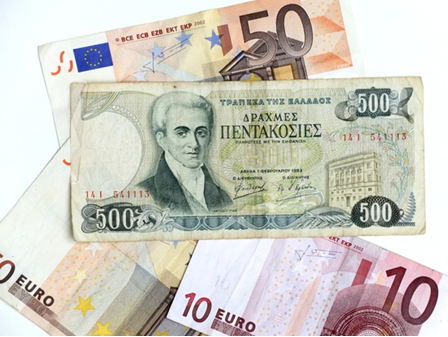Bank Bail Ins Begin as EU Bank “Bailed In” In Austria
Bank bail ins in the EU are here after Austria’s financial markets regulator FMA imposed a hefty haircut on creditors in an Austrian bank. Creditors in the bank Heta Asset Resolution will receive less than half of their money back according to the country’s financial regulator, the FMA.
Senior bondholders in the so called “bad bank” could expect to receive around €0.46 for each euro which would be paid from the realisation of assets by 2020, according to the FMA statement. It said that this had been calculated using “very conservative” assumptions.
“This package of measures also ensures the equal treatment of creditors. Orderly resolution is more advantageous than insolvency proceedings,” the FMA said.
Bond maturities, however, will be extended to 31 December 2023 as “all currently outstanding legal disputes will realistically only be concluded by the end of 2023”. “Only at that point will it be possible to finally distribute the assets and to liquidate the company,” the regulator said.
In November 2015, the largest collection of creditors, which included Pacific Investment Management Co (PIMCO), Commerzbank , FMS Wertmanagement AoeR and a collection of distressed debt investors, proposed to extend bond maturities for 30 years in return for repayment in full.
Representatives of Austrian province Carinthia and creditors of the failed regional lender are to meet in London tomorrow to try to break the impasse over a bond buyback scheme, an Austrian newspaper reported. Carinthia, a southern Austrian province, guaranteed the debt of local lender Hypo Alpe Adria before the bank collapsed and now faces the threat of insolvency if it had to honour the 10.8 billion euro ($12.3 billion) debt in full.
Heta Asset Resolution was formed to wind down the bank but regulators froze Heta’s debt repayments after discovering a gaping capital hole at the bad bank.
Heta’s bail-ins pertain to bond holders but it is important to note that recently introduced EU and international bail-in regulation mean that depositors in banks are now exposed to having their deposits bailed in.
Bail-ins are one of the greatest financial risks to investors, savers and indeed companies today. Yet they remain the most poorly covered financial risk and are largely ignored by financial advisers, brokers and not surprisingly banks.
There is a belief that bail-ins only relate to “the rich” and very wealthy depositors as they will be imposed on those with deposits greater than national deposit guarantees. These deposit “guarantees” are generally the ‘big round’, arbitrary number of say €100,000, $250,000 and £75,000. These are not particularly large amounts and could amount to the entire life savings of a family or pensioners or indeed it could be the entire capital of a small to medium size business enterprise.
There is a belief that bail-ins only relate to “the rich” and very wealthy depositors as they will be imposed on those with deposits greater than national deposit guarantees. These deposit “guarantees” are generally the ‘big round’, arbitrary number of €100,000, $100,000 and £75,000. This is not a particularly large amount and could amount to the entire life savings of a family or pensioners or indeed it could be the entire capital of a small to medium size business enterprise.
 Bail-Ins – Key Considerations (GoldCore Research)
Bail-Ins – Key Considerations (GoldCore Research)
Media internationally has not analysed this growing financial risk and the risk that it poses to the deposits of savers, investors and companies and indeed to our respective economies. In a world already beset with huge deflationary pressures, bail-ins and confiscating deposits would be extremely deflationary and would likely contribute to severe recessions.
This is something we warned of when we first conducted our extensive research on the developing bail-in regimes. Diversification of deposits remains vital and one important way to protect against bail-ins is owning bullion. Taking delivery of gold and silver coins and bars or owning bullion in allocated and segregated storage in the safest vaults in the world is a prudent way to protect against bail-ins.
Access Protecting your Savings In The Coming Bail-In Era (11 pages)
Access From Bail-Outs to Bail-Ins: Risks and Ramifications – (51 pages)
Gold Prices (LBMA)
11 April: USD 1,247.25, EUR 1,095.84 and GBP 878.96 per ounce
8 April: USD 1,235.00, EUR 1,085.18 and GBP 877.33 per ounce
7 April: USD 1,237.50, EUR 1,086.07 and GBP 879.70 per ounce
6 April: USD 1,225.75, EUR 1,079.76 and GBP 868.38 per ounce
5 April: USD 1,231.50, EUR 1,083.59 and GBP 866.32 per ounce
Silver Prices (LBMA)
11 April: USD 15.16, EUR 13.34 and GBP 10.78 per ounce (Not updated yet)
8 April: USD 15.16, EUR 13.34 and GBP 10.78 per ounce
7 April: USD 15.22, EUR 13.38 and GBP 10.81 per ounce
6 April: USD 15.07, EUR 13.28 and GBP 10.71 per ounce
5 April: USD 15.19, EUR 13.37 and GBP 10.69 per ounce
Gold News and Commentary
Gold climbs to near 3-week high on safe-haven demand (Reuters)
Gold Nears Three-Week High as Fed Outlook on Rates Erodes Dollar (Bloomberg)
Obama, Yellen in unexpected meeting Monday to talk economy (Marketwatch)
Now, India’s very own gold coins (Hindu Business)
China goes prospecting for world’s gold mines (WSJ)
Gold’s “run is far from over” (CNBC)
Gold Defies Stock Bear Rally (Gold Seek)
Myths About Gold That Just Won’t Die (Zero Hedge)
Standby for terrible news from Wall Street … (Yahoo Finance)
Dead Canaries And Disobedient Falcons: Bad Month Coming, Especially For Banks (Dollar Collapse)
Read More Here
The post Bank Bail Ins Begin as EU Bank “Bailed In” In Austria appeared first on crude-oil.top.

